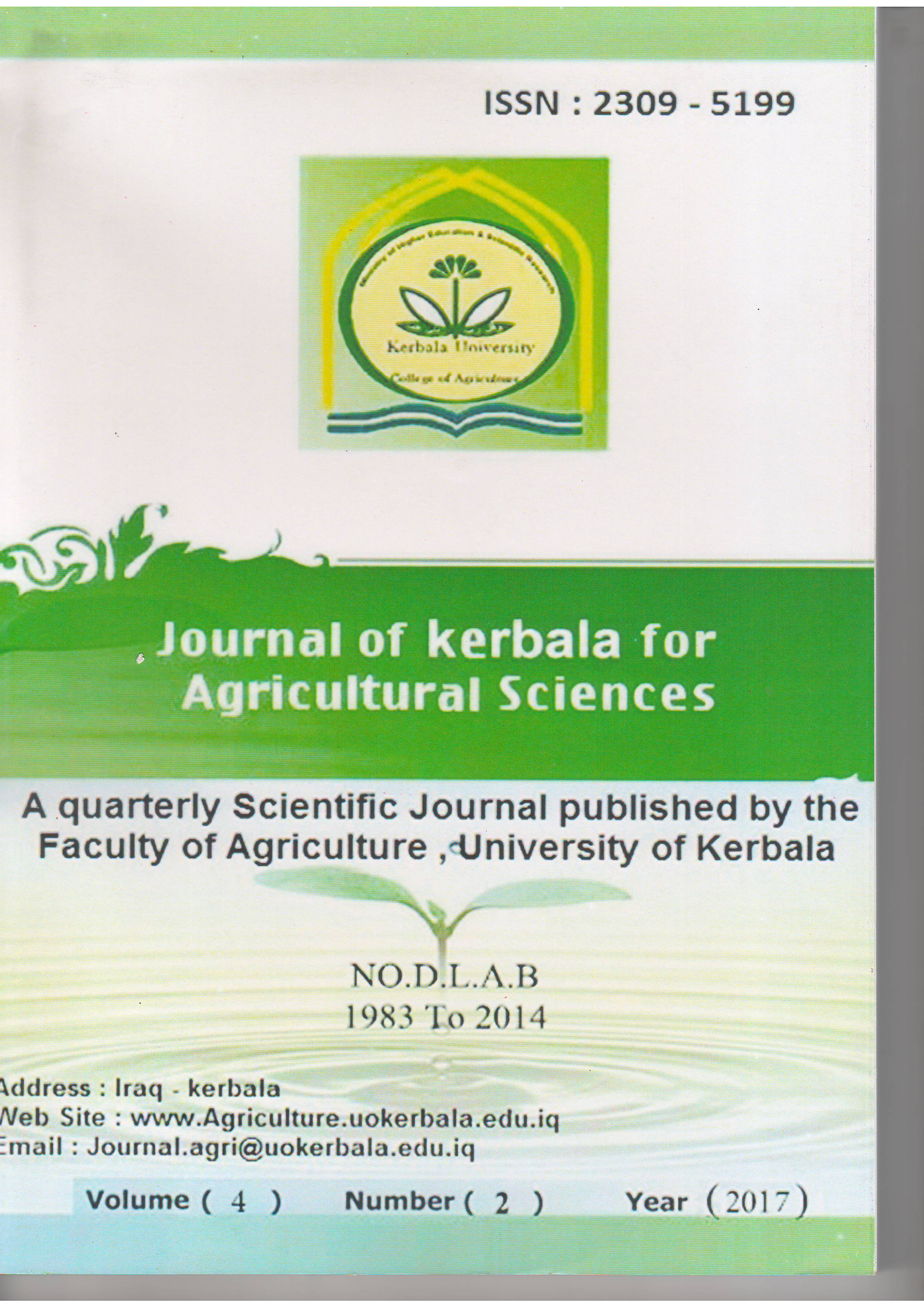Effect of proline and Glycine betaine in leaves content of from Auxin , Gibberellic Acid and some antioxidants in orange seedlings of Washington Navel Orange (Citrus sinensis L.) Under Salinity Conditions
DOI:
https://doi.org/10.59658/jkas.v4i2.226Keywords:
Washington Navel Orange, proline, glycine betaine, calcium chloride, CAT, POX, SOD and APXAbstract
The current experiment was conducted to study the effect of proline and glycine betaine at two concentrations for each; 50 and 100 mM in addition to control and two salts; sodium chloride and calcium chloride at 25 and 50 mM for each in addition to control, in vegetative characters of Washington navel orange (Citrus sinensis L.) grafted on volkamer lemon or swingle citrumelo rootstocks. Salts were added to the irrigation water and seedlings were irrigated with saline water three times at three month interval. After one week of the irrigation with saline water, seedlings were sprayed with the osmoprotectants (three sprays). Treatments were arranged in RCBD design as a factorial experiment(2*5*5)with three replications.
The results revealed that the two rootstocks had no effect on the content of the leaves from Auxin , Gibberellic Acid and some antioxidants on swingle citrumelo rootstocks. The use of the two protectants at all concentrations caused significant increase in content of the leaves from Auxin , Gibberellic Acid. Glycine betaine was superior in its effect compare to proline. Also, the two salts had inhibitory effects on most of the parameters measured. The combination between rootstocks and osmoprotectants had significant effect on most growth parameters. In general, most of the two combinations had pronounced effects. In addition, the combination of the three factors also effect the parameters significantly. From the above results, we can conclude that the two salts had an inhibitory effect on the leaves content of Auxin , Gibberellic Acid and some antioxidants which can be improved by the addition of glycine betaine and proline.
Downloads
Published
How to Cite
Issue
Section
License
Copyright (c) 2017 Copyright (c) 2024 is the Author's article. Published by the Journal of Kerbala for Agricultural Sciences under a CC BY 4.0 license

This work is licensed under a Creative Commons Attribution 4.0 International License.
Licensing Terms
All articles are published under a Creative Commons License and will be directed to the Creative Commons Attribution 4.0 International License (CC BY 4.0) That permits use, distribution, and reproduction in any medium, provided the original work is properly cited. This license also allows the work to be used for commercial purposes.
Use by both non-commercial and commercial users
This content is licensed under a Creative Commons Attribution 4.0 International (CC BY 4.0) license, permitting use by both non-commercial and commercial users. Individual users may access, download, copy, display, and redistribute the articles to colleagues, as well as adapt, translate, and text- and data-mine the content, subject to the following conditions:
- The author's moral rights, including the right of attribution and the right to protect their work from derogatory treatment, are respected.
- Where content in the article is identified as belonging to a third party, users must ensure that any reuse complies with the copyright policies of the owner of that content.
- If the article content is reused for research or educational purposes, users should maintain a link to the appropriate bibliographic citation, including the DOI and a link to the published version on the journal's website.

